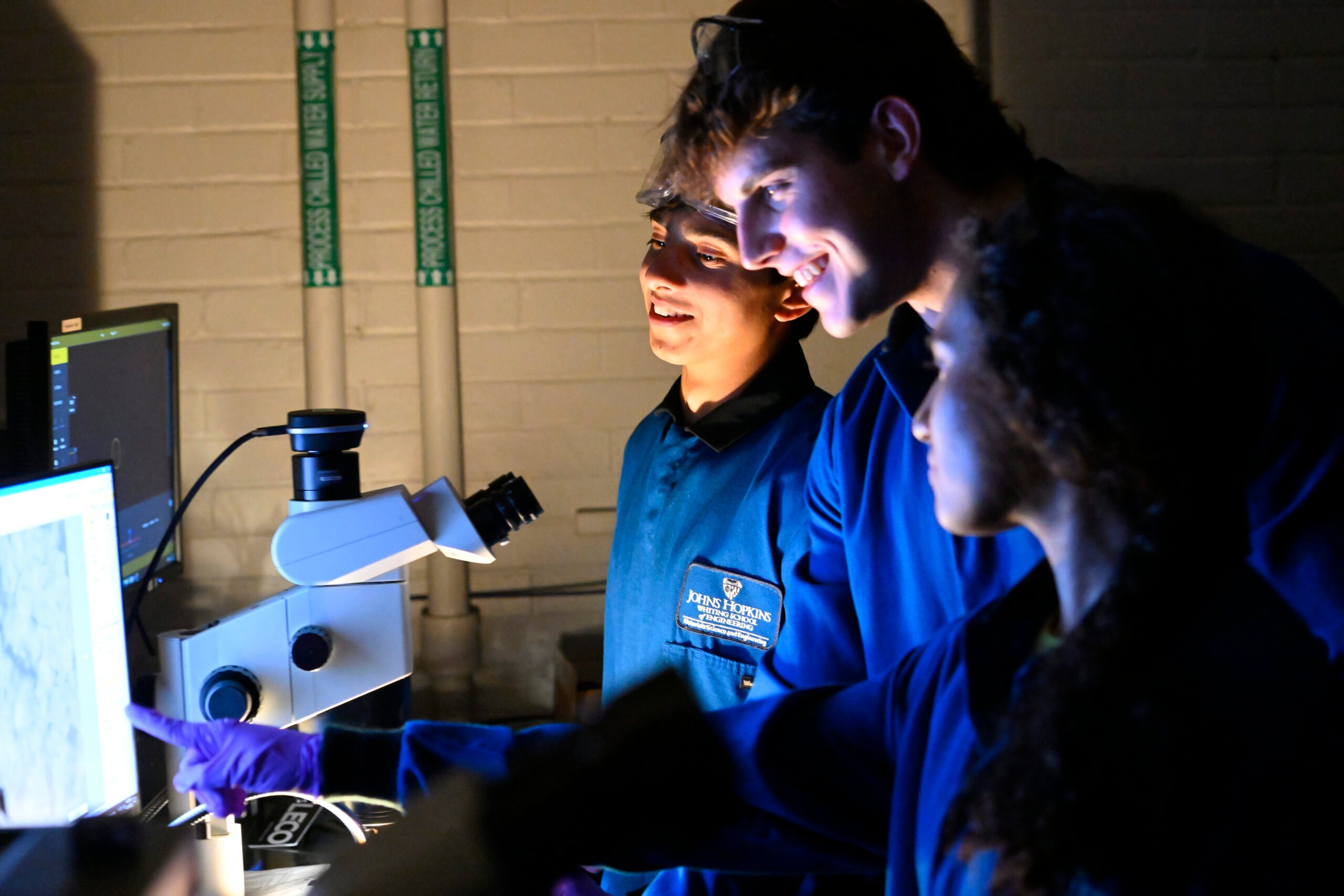Author: Conner Allen
Photo by: Will Kirk
Three Johns Hopkins materials science and engineering undergraduates are investigating how to combine plant materials with bonding agents to create completely renewable drywall alternatives. Working with alumni-founded startup JJ Innovative Materials, one team is researching how plants like bamboo, hemp, oak, and corn interact with calcium hydroxide, while another student is evaluating the strength of hemp-based prototypes. The teams will showcase their projects on April 29 during Design Day—the Whiting School of Engineering’s annual event showcasing students’ solutions to real-world problems.
“Drywall is one of the most common construction items, yet typical gypsum boards can cause acid rain and are extremely harmful to the environment,” says senior Ethan Bernstein, who teamed up with JB Hudnall for their sustainable drywall project. “We are looking at chemical compositions of plant-rock bonds to determine the best way to create a biocompatible and renewable drywall alternative.”
Bernstein and Hudnall seek to understand the chemical foundations of renewable plants and cementitious materials—substances that harden and bind together like cement— to create a drywall board, focusing on plants overproduced or wasted by manufacturers.
“We’ve decided to experiment with hemp hurds (the woody inner core of the plant), corn, bamboo, and oak, combining them with calcium hydroxide and fly ash, which is a fine, glassy powder from the combustion of carbon-burning fuels,” says Hudnall. “We are observing what happens between plants and rocks at the molecular level, which, before our work, was not well understood. Recent studies suggest that hemp and calcium hydroxide bond well, and we wanted to see if the other plants would bond as well as hemp did.”
The team used imagery methods like X-ray spectroscopy, Scanning Electron Microscopy (SEM), and optical microscopes to view the bonded elements. They then analyzed its molecular structure and chemical composition by employing Attenuated Total Reflectance Fourier Transform Infrared Spectroscopy (ATR-FTIR) and Scanning Electron Microscopy/Energy-Dispersive X-ray Spectroscopy (SEM/EDS). Both methods informed the researchers if the compounds bonded—insights that could guide the optimization of future bio composite materials.
“Although we are still refining the process and finding the best combination of plant and rock, we have a solid idea of a hemp and calcium hydroxide-based drywall product, which would be durable as a drywall board while remaining carbon negative,” says Bernstein.
While Bernstein and Hudnall are investigating what happens at the chemical level, Peter Lim’s project focuses on the structure of the finished drywall, specifically hemp-based renewable drywall.
“I’m investigating the differences between two parts of the hemp that we use, which are hemp fibers and hemp hurds, and see how each affects the board’s behavior and the manufacturing process,” says Lim. “I want to understand how the materials affect fracture mechanics, like how the board breaks and how the materials affect overall strength.”
Lim is using a finished prototype of hemp drywall and employing a 3-point bending test to measure the board’s flexural strength—its ability to resist bending and being deformed when a load is applied. The test uses a universal testing machine, which supports the board at both ends while applying pressure in the center. The machine measures how much the board resists bending, revealing its stiffness.
Both teams aim to make the strongest drywall that meets the standards set by the American Society for Testing and Materials (ATSM), an international organization that ensures consistency and reliability for products across industries.
The students were mentored by the team at JJ Innovative Materials: CEO Taein Lee, Engr ‘22 (PhD) and COO Mark Wo Engr ‘16, materials science and engineering alumni; and Director of Compliance Chu Ding Engr ‘22 (PhD), an alumnus of civil engineering.

